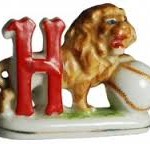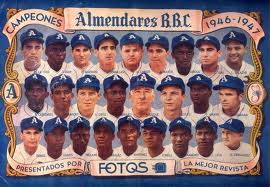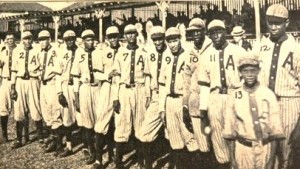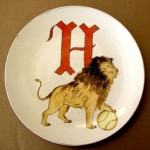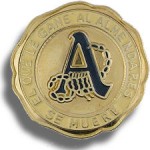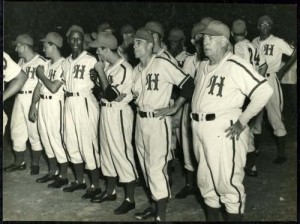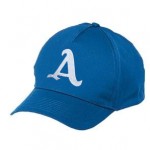The first news about baseball in Cuba dates back to 1866. And sooner or later take root despite the dire predictions of those who claimed they would fail to be imposed on cockfighting or bullfighting.
In those days baseball was called “American ball” or “Foreign sport”. The Cubans were excited so its development was unexpected and because of his moves were always different. Unlike what occurred in the bullfighting, which was known beforehand, without variation, would pikes, flags and death. Not without some ingenuity wrote a eulogist of the new sport: “In the bulls were given away proudly wearing ribbons in dying wild beasts. In baseball, however, are the ladies that reward the cunning of the players standing in the bows breasts than those stored in memory. Ribbons dear, do not smell blood. ” Because the Cubans were, from its inception, and exalted ardent followers of the sport.
ETERNAL RIVALS
In 1868 he founded the Havana Club that placed his home in Vedado, near the sea. Four years later, after the covenant of Zanjon Almendares team emerged. The Almendares settled in the Hill, near Park Tulip, until placed in front of the Quinta de los Molinos. Players white, middle and upper class, with nationalist concerns more or less defined, formed the Havana. Its color was red and his symbol, the lion. The Almendares, white, of course, and educated in New York all came from the aristocracy and distance were with the country’s problems. The blue and identified the scorpion was his symbol. In that team were lined along the Cubans, at least two Spanish. In Havana included the patriarch of the national ball, Emilio Sabourin, who died in jail for their efforts for independence.
But there were these the only teams then. Felix Julio Alfonso talks about 200 on the island, composed of whites, who were the majority, and by mestizos and blacks, they could organize their own clubs and take advantage of baseball as an effective mechanism to increase self esteem and move up the scale social skills by demonstrating in the game. Among these clubs, Fe, which was headquartered in Jesus del Monte, could alternate with Havana and Almendares. It was a very unstable and it was not uncommon for players to spend their rival teams, preferably at Havana. But he played well. I knew him to hurt them where it habanistas and defeated them several times and discussed and took their supremacy of champions, as when in 1888 they were winners in the championship.
The Havana, however, did not give importance to their defeats against the Faith, if after she beat the Almendares. Aim Felix Julio Alfonso: “It happened in practice that the same teams winning each other in the following order: Fe defeating Almendares, these in turn earned the Reds, and finally habanistas retaliated with the blues. A refrain in which all democratic triumphed once, but that ended putting things in their place. ”
Because Havana was in the 1880’s, the largest baseball club of the island, attracting the best players, including Americans. The Almendares struggled to move. A rivalry that gained tremendous momentum over the years and which lasted until after 1959 disappeared as teams.
Eladio Secades said the contention between the two clubs began on a roundabout. The Directive of the Almendares, and at its headquarters in front of the Quinta de los Molinos, in question for a considerable amount of money to build a gazebo surrounded by luxurious gardens, which opened with a lavish dance. The opponents did not want to be left behind and built their own, “simpler, but more artistic.”
From there the anger took hold of tradition. Soon after, when, as usual, the Habana won the 1885-86 championship, a unique photographic study of the capital to photograph the team wanted to expose the photo in its gallery of remarkable. The exhibit greatly annoyed the proselytes of the Almendares. One day dawned broken window and the image of the players, muddy.
WAR COMES
After 1895, a group of boys in Key West, U.S., Cuban and Cuban children and almost all tobacco, Cuba formed the club, which operated exclusively to raise funds for independence. Since I could not play on Sundays, to stop it laws then in force in that country, held their party on Monday, which made them lose a work day without a cent perceived the game, with proceeds entirely thickened funds Revolution. In Cuba included, among others, a son of Jose Dolores Poyo, a great friend and collaborator Marti and Agustín (Tinti) Molina, who devoted his life to the ball.
Came to Key West rivalry between Habana and Almendares, and players and fans of both teams were organized accordingly under the respective red and blue. Since missing the Carmelite, who was the color that identified the Faith, was formed very powerful Key West Browns. Championships were organized, but lasted a short time because many of those players chose Cuban immigrants change the bat and ball by rebel machetes. In successive expeditions were returning to Cuba to join the Liberation Army. He did Tinti Molina, in the expedition of General Emilio Nunez for Palo Alto, arrived accompanied by five other players.
It was not until 1901 when we traveled to ninth U.S. for the first time. The businessman Abel Linares organized with the collaboration of Tinti Molina, and made a great impression among Americans. They went to the land to them and asked where they learned to play. Since then Cuba suffered the first U.S. military intervention, it was said that the occupants had taught the patio, not knowing that already by that time the ball was expanded and consolidated in the Island
But if those games were quite an event of excellence, the All Cubans was an economic disaster. By inexperience and ignorance, went into the ninth to conquer the U.S. market baseball without first signing contracts in advance the dates of meetings and without having secured the land.
Abel Linares learned from that failure, he recovered and persisted in their efforts. Until his death did not fail to take, year after year, the Cuban Stars to the neighboring country, opening the doors to the natives of North American baseball.
Sources: Wiki/CiroBianchiRoss/InternetPhotos/TheCubanHistory.com
BASEBALL: Havana y Almendares, the eternal rivals. History
The Cuban History, Arnoldo Varona, Editor
BASEBALL: HABANA Y ALMENDARES: LOS ETERNOS RIVALES. COMIENZOS.
Las primeras noticias sobre el beisbol en Cuba se remontan a 1866. Y arraigó más temprano que tarde pese a los funestos augurios de los que aseveraban que no lograría imponerse a las peleas de gallos ni a las corridas de toros.
En aquellos tiempos se le llamaba al béisbol “pelota americana” o “deporte extranjero”. A los cubanos comenzó a entusiasmarle por lo que su desarrollo tenía de imprevisto y porque sus jugadas eran siempre distintas. A diferencia de lo que sucedía en el toreo, donde se sabía de antemano que, sin variación, habría picas, banderillas y muerte. No sin cierta ingenuidad escribía un panegirista del nuevo deporte: “En los toros se regalaban con orgullo las moñas que llevaban al morir las fieras. En el base ball, en cambio, son las damas las que premian la astucia de los jugadores colocando en los pechos las moñas que aquellos guardan como recuerdo. Moñas queridas, que no huelen a sangre”. Porque las cubanas fueron, desde sus inicios, ardientes y exaltadas seguidoras de ese deporte.
ETERNOS RIVALES
En 1868 se fundó el Club Habana que situó su residencia en el Vedado, cerca del mar. Cuatro años más tarde, tras el pacto del Zanjón, surgió el equipo del Almendares. Los del Almendares se asentaron en el Cerro, cerca del parque de Tulipán, hasta que se ubicaron frente a la Quinta de los Molinos. Jugadores blancos, de clase media y alta, con preocupaciones nacionalistas más o menos definidas, conformaban el Habana. Su color era el rojo y su símbolo, el león. Los del Almendares, blancos también, por supuesto, y educados todos en Nueva York, provenían de la aristocracia y veían con lejanía los problemas del país. Los identificaba el color azul y el alacrán era su símbolo. En ese equipo se alineaban, junto a los cubanos, por lo menos dos españoles. En el Habana figuraba el patriarca de la pelota nacional, Emilio Sabourín, que murió en la cárcel por sus empeños independentistas.
Pero no eran esos los únicos equipos de entonces. Félix Julio Alfonso habla de unos 200 en la Isla, integrados por blancos, que eran mayoría, y también por mestizos y negros, que pudieron organizar sus propios clubes y valerse del béisbol como un mecanismo eficaz para aumentar la autoestima personal y ascender en la escala social gracias a las habilidades que demostraban en el juego. Entre esos clubes, el Fe, que tenía su sede en Jesús del Monte, podía alternar con Habana y Almendares. Era un equipo muy inestable y no era raro que sus jugadores se pasaran a equipos rivales, preferiblemente al Habana. Pero jugaba bien. Sabía darle a los habanistas donde más les dolía y los derrotaron varias veces y le discutieron y arrebataron su supremacía de campeones, como cuando en 1888 quedaron vencedores en el campeonato.
El Habana, sin embargo, no concedía importancia a sus derrotas frente al Fe, si después vencía al Almendares. Apunta Félix Julio Alfonso: “Sucedía en la práctica que los mismos equipos se ganaban unos a otros en el siguiente orden: Almendares derrotaba a Fe, estos a su vez ganaban a los rojos, y finalmente los habanistas se desquitaban con los azules. Un ritornelo democrático en el que todos triunfaban alguna vez, pero que terminaba poniendo las cosas en su lugar”.
Porque el Habana era, en la década de 1880, el club de pelota más importante de la Isla; atraía a los mejores jugadores, incluso norteamericanos. El Almendares luchaba por desplazarlo. Una rivalidad que cobró una fuerza tremenda con los años y que perduró hasta que después de 1959 desaparecieron como equipos.
Decía Eladio Secades que la porfía entre ambos clubes comenzó por una glorieta. La directiva del Almendares, ya en su sede frente a la Quinta de los Molinos, allegó una cantidad de dinero considerable para construir una glorieta lujosa y rodeada de jardines, que fue inaugurada con un baile suntuoso. Los adversarios no quisieron quedarse atrás y erigieron la propia, “más sencilla, pero más artística”.
A partir de ahí el encono cobró fuerza de tradición. Poco después, cuando, como ya era costumbre, el Habana ganó el campeonato de 1885-86, un exclusivo estudio fotográfico de la capital quiso fotografiar al equipo a fin de exponer la foto en su galería de notables. La exhibición molestó sobremanera a los prosélitos del Almendares. Un día la vidriera amaneció rota y la imagen de los jugadores, enfangada.
VIENE LA GUERRA
Después de 1895, un grupo de muchachos de Cayo Hueso, en EE UU, cubanos e hijos de cubanos y casi todos tabaqueros, formaron el club Cuba, que actuaba exclusivamente para recaudar fondos para la independencia. Como no podía jugar los domingos, por impedirlo leyes entonces vigentes en ese país, celebraban sus partidos los lunes, lo que hacía que perdieran un día de trabajo, sin que percibieran un centavo por el juego, cuya recaudación engrosaba por entero los fondos de la Revolución. En el Cuba figuraban, entre otros, un hijo de José Dolores Poyo, gran amigo y colaborador de Martí, y Agustín (Tinti) Molina, que dedicaría su vida a la pelota.
Hasta Cayo Hueso llegó la rivalidad entre el Habana y el Almendares, y peloteros y fanáticos de ambos equipos se organizaron en consecuencia bajo los respectivos colores rojo y azul. Como faltaba el carmelita, que era el color que identificaba al Fe, se formó el potentísimo Key West Browns. Se organizaron campeonatos, pero duraron poco tiempo porque muchos de aquellos peloteros cubanos emigrados prefirieron cambiar el bate y la pelota por el machete insurrecto. En sucesivas expediciones fueron regresando a Cuba para sumarse al Ejército Libertador. Así lo hizo Tinti Molina, que en la expedición del general Emilio Núñez por Palo Alto, llegó en compañía de otros cinco peloteros.
No fue hasta 1901 cuando una novena nuestra viajó a EE UU por primera vez. La organizó el empresario Abel Linares, con la colaboración de Tinti Molina, y causó gran impresión entre los norteamericanos. Iban a los terrenos a verlos y preguntaban dónde habían aprendido a jugar. Como Cuba sufría entonces la primera intervención militar norteamericana, se llegó a decir que los ocupantes habían enseñado a los del patio, desconociéndose que ya para esa fecha la pelota se había extendido y consolidado en la Isla.
Pero si aquellos juegos fueron todo un suceso de excelencia, el All Cubans fue un desastre económico. Por inexperiencia y desconocimiento, se lanzó a la novena a la conquista del mercado beisbolero de EE UU sin haberse conveníado de antemano las fechas de los encuentros y sin tener asegurados los terrenos.
Abel Linares aprendió de aquel fracaso, se repuso y persistió en su afán. Hasta su muerte no dejó de llevar, año tras año, al Cuban Stars al país vecino, lo que abrió a los criollos las puertas del béisbol norteamericano. (Continuará)
Sources: Wiki/CiroBianchiRoss/InternetPhotos/TheCubanHistory.com
BASEBALL: Havana y Almendares, the eternal rivals. History
The Cuban History, Arnoldo Varona, Editor



 BASEBALL: Havana vs. Almendares, the Eternal Rivals. History * HABANA Y ALMENDARES, los eternos rivales. Sus Comienzos.
BASEBALL: Havana vs. Almendares, the Eternal Rivals. History * HABANA Y ALMENDARES, los eternos rivales. Sus Comienzos.